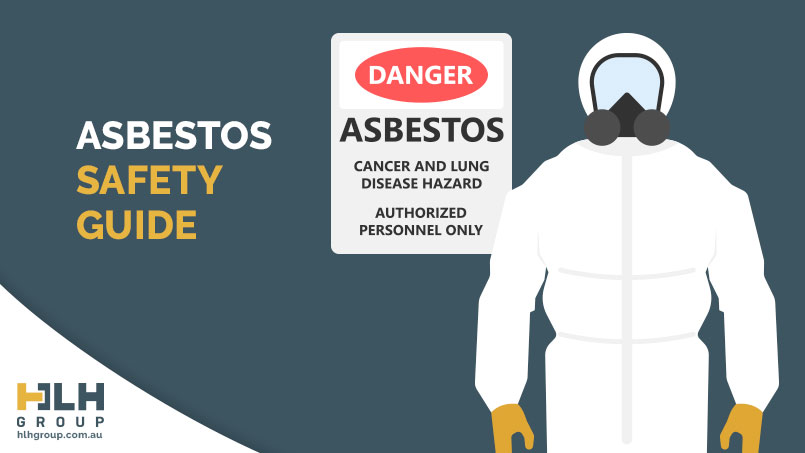Asbestos Safety
Asbestos is a naturally occurring mineral composed of flexible fibers that are resistant to heat, electricity, and corrosion. These qualities make the mineral useful, but they also make asbestos exposure highly toxic. Asbestos was widely used in construction as an effective insulator, and it can be added to cloth, paper, cement, plastic, and other materials to make them stronger. But when asbestos dust is inhaled or ingested, the fibers can become permanently trapped in the body. Over decades, trapped asbestos fibers can cause inflammation, scarring and eventually genetic damage. In this post our safety officer Pat will give you a guide on what you should consider to stay safe around asbestos.
Asbestos Exposure Risks
No amount of asbestos exposure is safe, but asbestos generally has the worst effects when a person is exposed to an intense concentration of it, or they are exposed on a regular basis over a long period of time.
More asbestos accumulates in the body with every exposure, and there is no known way to reverse the damage it causes. Asbestos fibers are easily inhaled once they become airborne. It is important to avoid disturbing products that may contain asbestos. Additionally, people who live near naturally occurring asbestos deposits should avoid disturbing soil that may be contaminated.
The majority of people with asbestos-related diseases are men in their 60s or older. This is because asbestos-related diseases have a long latency period, often taking decades to develop. They usually trace back to occupational exposure at workplaces historically staffed by men.
Tips for Safely Handling Asbestos
With 1 in every 3 Australian homes containing asbestos, Tradies, handymen and labourer hire who work on domestic properties are more likely to come across asbestos every day of their working life so it’s vital they learn to identify and manage asbestos safely.
Some situations require the removal of asbestos-containing materials. But it may be safer to leave the materials undisturbed or encapsulate them with a sealant. Consult a certified, local asbestos abatement professional for the best advice.
Asbestos Safety Do’s and Don’ts
Asbestos is a dangerous material that is known to cause cancer and lung disease in people who have been exposed. That’s why we make it our mission to educate homeowners and home vendors about asbestos exposure and the precautions they can take to prevent it. If you suspect your home or building may have asbestos then here are some simple do’s and don’ts to consider if you think you might be dealing with asbestos:
DO
- Leave it alone.
- Have a professional asbestos inspector test for asbestos before a renovation.
- Make all occupants of the building aware of the asbestos.
- Hire a professional asbestos abatement contractor to remove and safely dispose of the materials.
- Clean any tools, clothes and shoes that may have been exposed to asbestos before continuing to use them.
- Contact an asbestos abatement professional after any fire or water damage.
- Use rough or abrasive cleaning products or tools on materials that might contain asbestos
- Disturb or remove the asbestos yourself
- Continue working in the same room once you’ve found asbestos
Remember that asbestos is only dangerous if it is disturbed or destroyed. By following these safety precautions, you can keep everyone in your home or building safe and healthy.
Why is Asbestos Dangerous?
Asbestos is dangerous because exposure to it is proven to cause cancer and pulmonary diseases. When asbestos products become damaged, they release microscopically thin fibers that become airborne and are easily inhaled.
Long-term exposure puts people at risk of developing mesothelioma, lung, laryngeal and ovarian cancer. Some people develop an incurable pulmonary disease known as asbestosis, which involves progressive scarring of lung tissue. These conditions usually develop decades after exposure first began.
Asbestos Safety Conclusion
In order to protect yourself from asbestos contamination, you should minimize all work activities in areas that are known to contain asbestos. Take extra precautions not to damage any asbestos material, and any repair work should be done by professionals who are trained and experienced in working with asbestos. You should also avoid dusting, sweeping, or vacuuming areas of debris that may contain asbestos.
If you work in an area that has asbestos containing materials, you need to attend an asbestos awareness training course. If you have any suspicions that you have been contaminated by asbestos, you should immediately report this to your HSE representative.
Asbestos PPE
If you are working around asbestos, you need to be wearing the appropriate personal protective equipment. This should include disposable clothing, respirators, and gloves. You should also decontaminate both yourself and your tools before you leave the asbestos laden area. Rather than removing areas that contain asbestos yourself, employ a registered professional to do the job.
